12 Rare Vintage Glassware Styles That Are Hot With Collectors
Collecting antique glassware is more than just a hobby; it is a way to connect with history and art. Rare patterns can make a significant impact on the value of your collection, especially if they come from respected manufacturers. These pieces often reflect unique artistic styles and techniques that are no longer in production. If you want to build a collection that stands out, finding these rare glassware patterns is key. These vintage pieces not only add charm to your home but also increase in value over time. Let us take a closer look at some of the rarest patterns that can elevate your collection.
This post may contain affiliate links, which helps keep this content free. Please read our disclosure for more info.
Depression Glass Sharon Pattern
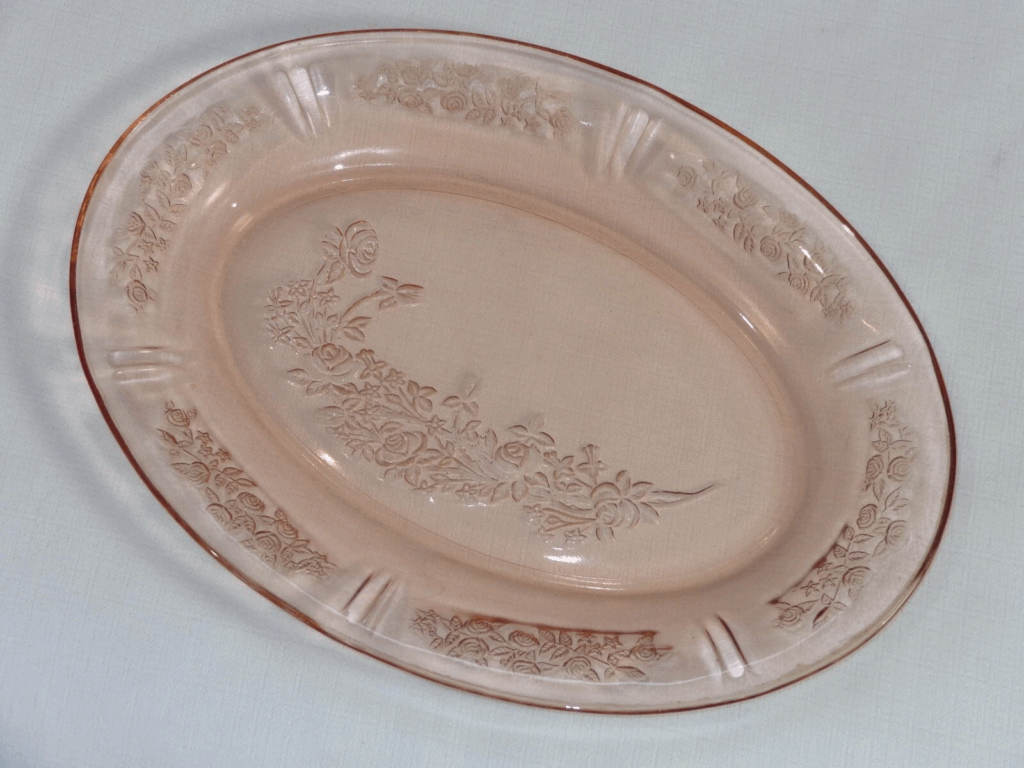
The Sharon pattern, often seen in pink, was introduced by the Jeannette Glass Company during the 1930s. This beautiful pattern features a floral design that adorns plates, bowls, and glasses, making it a versatile and appealing option for collectors. The Sharon pattern is rare in certain colors, with pink being the most common but still highly sought after. Prices for Sharon glassware can range from $40 to $400, with certain pieces reaching up to $1,000 if they are in pristine condition.
The floral motif on Sharon glassware is considered delicate and elegant, with fine details that highlight the craftsmanship of the Depression era. While the Sharon pattern was mass-produced, pieces in perfect condition or with rare color variations are much harder to find. These factors make it a desirable pattern for those who want to add both beauty and value to their collection. Collectors appreciate Sharon glass for its historical context and its association with the Great Depression period.
Murano Glass Sommerso
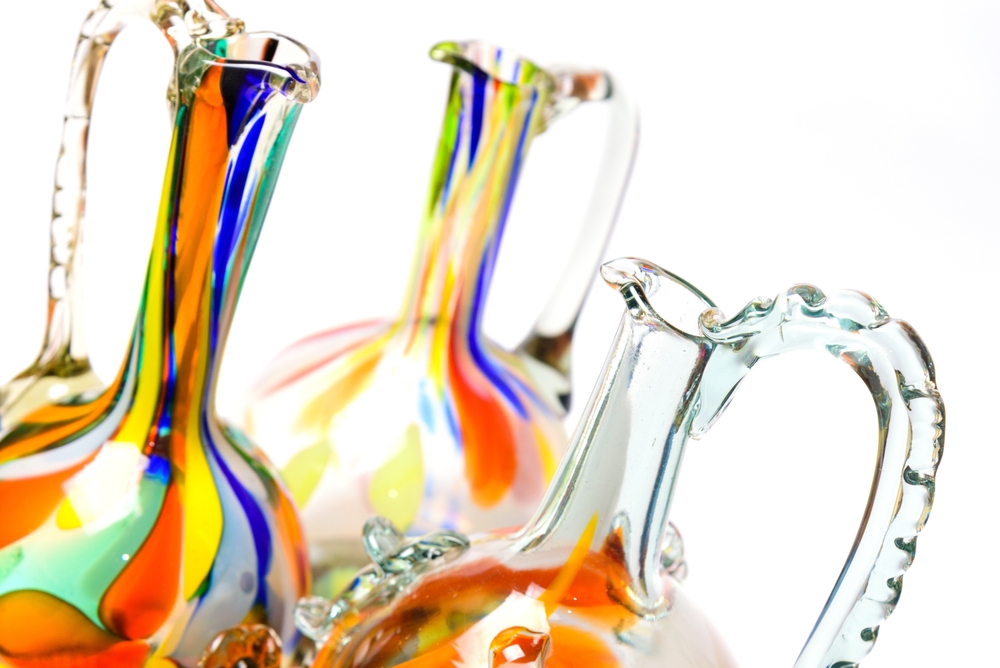
Murano Glass Sommerso was developed in the 1950s on the island of Murano, Italy. This technique involves layering different colors of glass to create a visually stunning effect. Sommerso pieces are rare due to their complexity, as the layered glass design requires high-level skill and precision. The price for Murano Sommerso glassware varies, with most pieces ranging from $100 to $5,000, depending on the size, color, and intricacy of the design.
The layering process in Sommerso glass creates deep, rich colors that give the glass a unique depth and brilliance. These pieces are often signed by the glass artist, making them even more desirable for collectors. Murano glass is known for its quality and the centuries-old traditions behind it, which adds to the value of each piece. The rarity of some of these pieces and the skill involved in their creation make them a prized addition to any collection.
Pressed Glass Vaseline Glassware
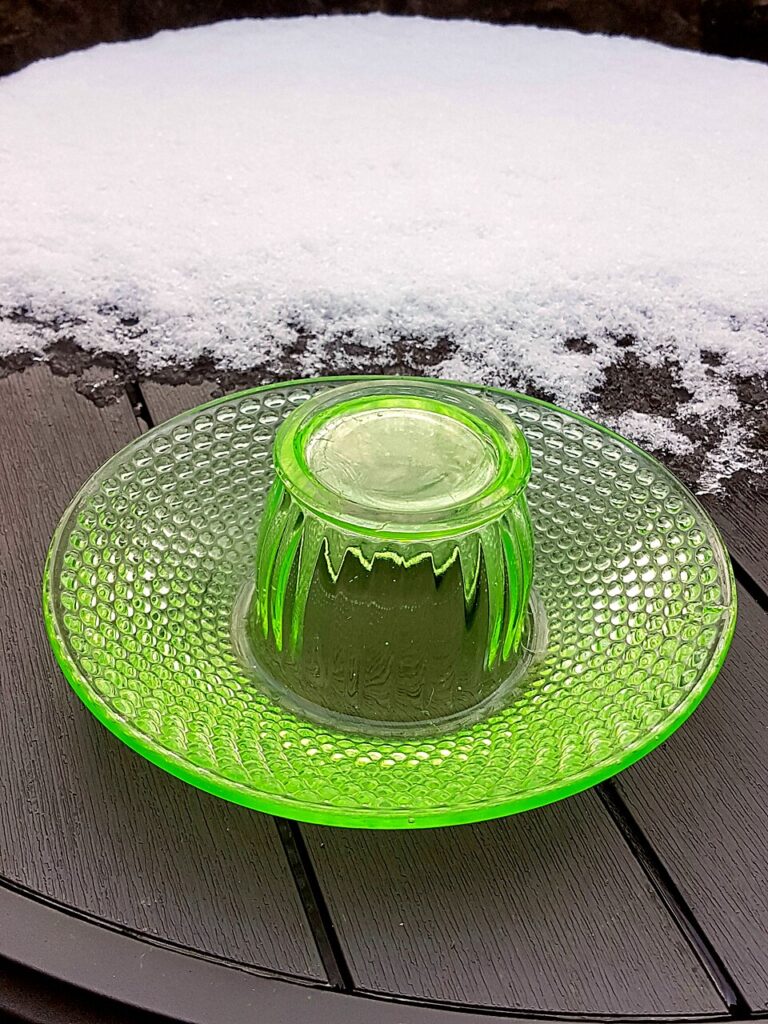
Vaseline Glassware, which first appeared in the early 1800s, is known for its glowing, uranium-based green color that shines under ultraviolet light. The glass was originally used in a variety of forms, from small decorative items to full dinnerware sets. What makes Vaseline Glassware rare is its association with uranium, which was later banned in glass production due to health concerns. Today, pieces of Vaseline Glassware can range from $50 to $2,000, with rare, well-preserved items fetching the highest prices.
The glow of Vaseline Glassware under UV light makes it a striking addition to any collection. Many collectors specifically seek out these glowing pieces, which adds to their allure and value. Due to its limited production and the unique properties of the glass, Vaseline Glassware is highly sought after by antique glass enthusiasts. The glow effect, coupled with the vintage appeal, makes it a valuable collectible.
Fenton Hobnail Glassware
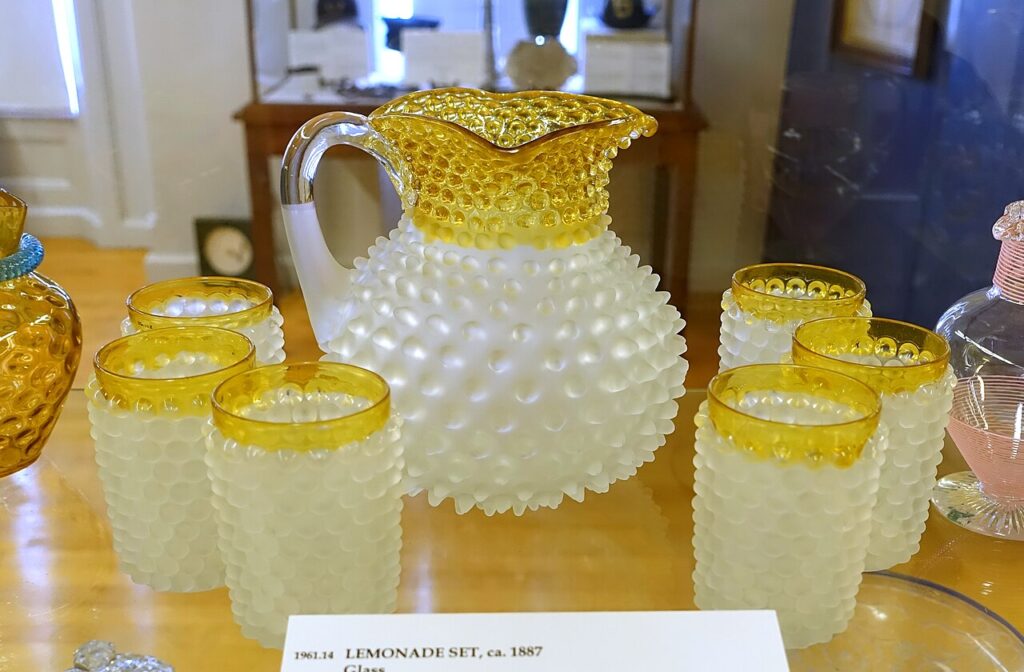
Fenton Hobnail glassware was first introduced in the 1930s and quickly became a popular pattern among collectors. The distinctive hobnail design features raised, rounded bumps all over the surface of the glass, creating a textured look that has remained timeless. The rarity of these pieces depends on their color and condition, with rarer shades like blue and cranberry often fetching higher prices. Today, Fenton Hobnail glassware can range from $50 to $1,000 or more depending on the specific piece and its rarity.
The patterns from Fenton are highly sought after due to their vintage appeal and the company’s historical significance. Fenton glassware, particularly in the Hobnail design, is recognized for its craftsmanship and vibrant colors. The use of this pattern on both functional items, like bowls and vases, as well as decorative pieces, makes it a versatile addition to any collection. As a result, these pieces remain a favorite among antique glassware collectors.
Tiffany and Co. Favrile Glass
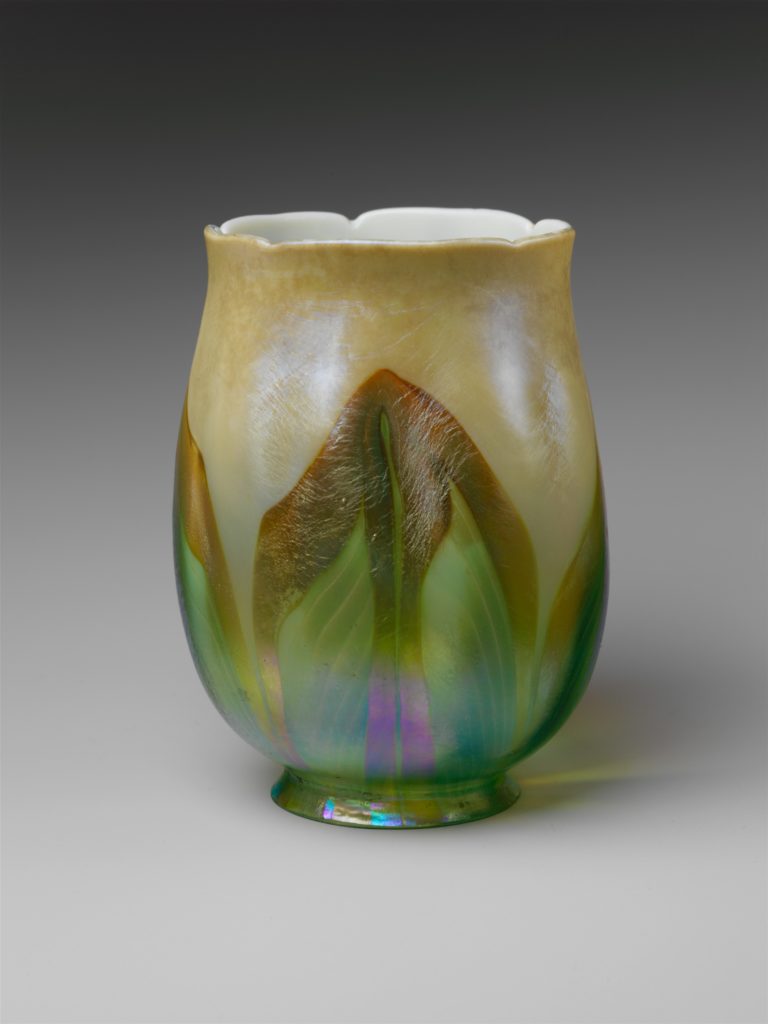
Favrile glass, created by Louis Comfort Tiffany in the early 20th century, is known for its iridescent finish and stunning color variations. Tiffany’s innovation involved creating glass that appeared to change color depending on the light and angle, which made each piece unique. Favrile glass is rare because it was produced in limited quantities, and many pieces have survived over the years. Tiffany Favrile glass items typically range from $500 to $20,000 or more, depending on the piece’s rarity and size.
Favrile glass is recognized for its luxurious finish and distinct coloration, which gives it a one-of-a-kind look. Tiffany’s use of this glass in vases, lamps, and other decorative items helped establish the company’s reputation for producing fine art glass. The iridescent effect and unique design make Favrile glass highly desirable in the world of antique glassware. Collectors prize these pieces for their historical value, craftsmanship, and the artistry involved in their creation.
Cambridge Glass Rose Point Pattern
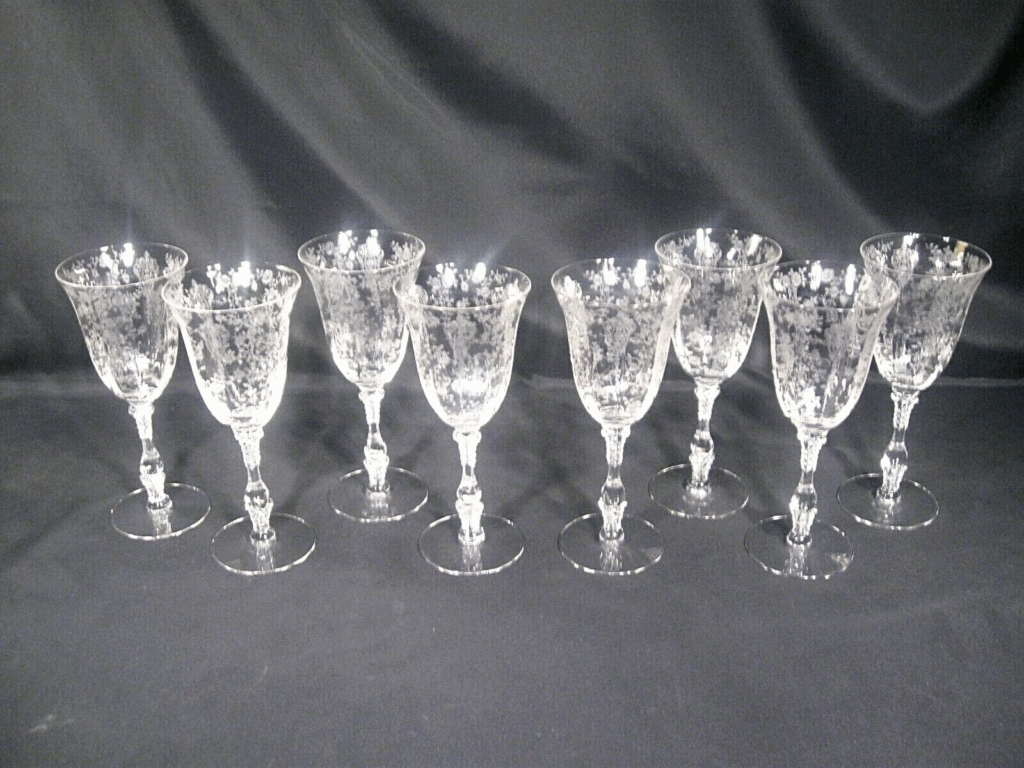
Introduced in the 1930s, the Rose Point pattern by Cambridge Glass features delicate etched floral designs that exude elegance. The pattern includes intricate rose motifs and fine details, which are admired for their graceful and timeless beauty. The rarity of the Rose Point pattern is due to its limited production and its discontinuation in the 1950s. Collectors can expect to pay between $50 and $2,000 for Rose Point glassware, with highly detailed pieces and rare colors commanding higher prices.
Rose Point was a favorite pattern for both functional pieces and decorative items, including bowls, glasses, and trays. The delicate etching and design make this glassware a standout in any collection, offering a refined aesthetic. Despite its age, the pattern remains popular due to its fine craftsmanship and the lasting beauty of its design. Rose Point glassware is often passed down as heirlooms, further enhancing its value and appeal.
Steuben Glass Aurene Pattern
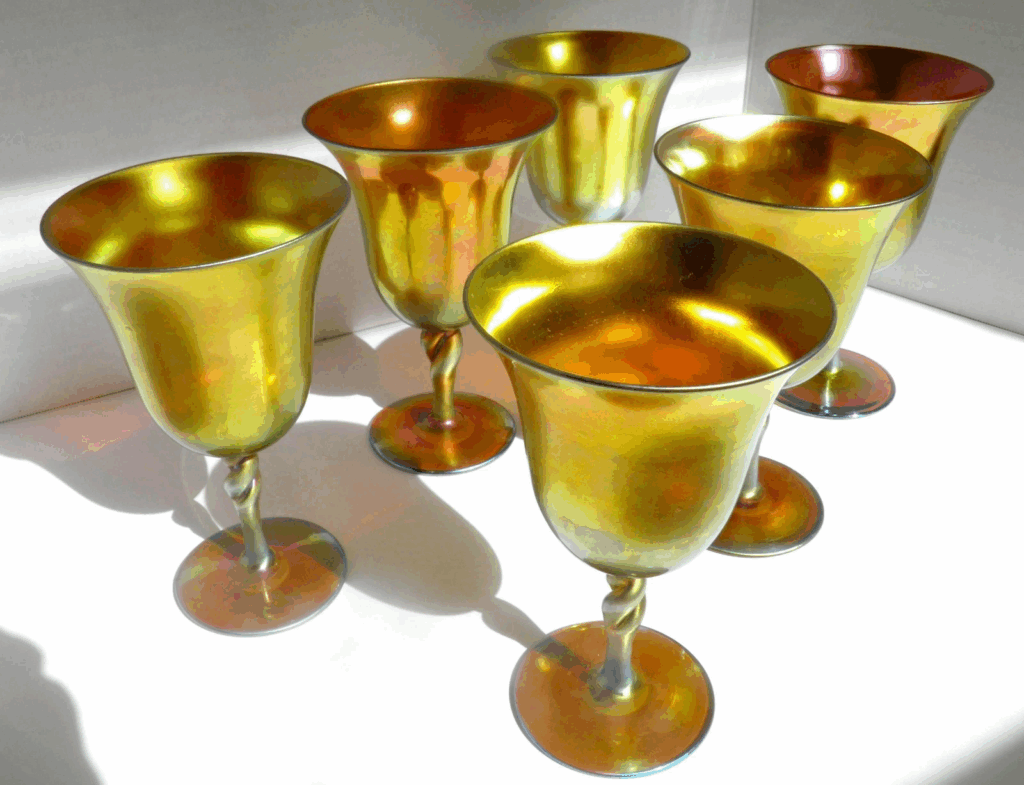
Steuben’s Aurene pattern, introduced in the early 1900s, is known for its striking iridescent finish. The glass is infused with metallic elements, creating an effect where the surface of the glass shimmers in different light conditions. The rarity of Aurene stems from Steuben’s limited production of these highly decorative items, which were intended for display rather than daily use. Prices for Aurene glass range from $500 to $10,000, with particularly rare colors or shapes fetching the highest prices.
The iridescent effect of Aurene glass makes it highly collectible, as it changes colors depending on how the light hits it. This pattern is most commonly found in vases, bowls, and decorative objects. The intricate process used to create Aurene glass made each piece unique, further adding to its appeal. As one of the most celebrated Steuben patterns, Aurene continues to be a sought-after piece for collectors of fine glassware.
Art Deco Frosted Glassware
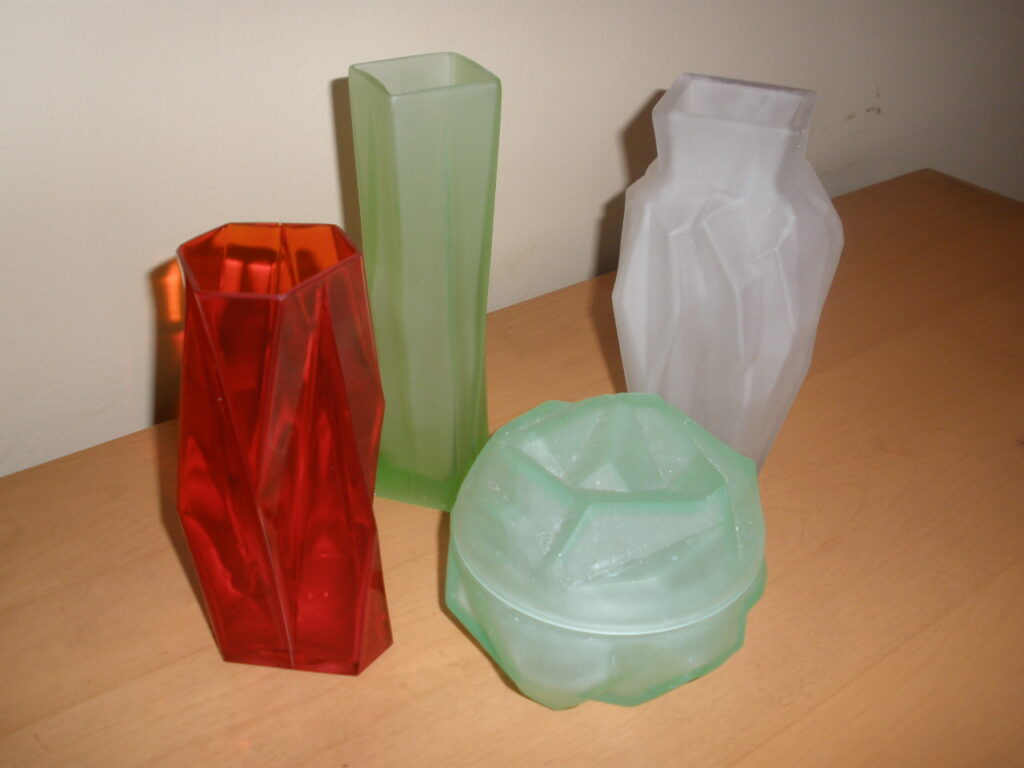
Frosted glassware, which gained popularity during the Art Deco period in the 1920s and 1930s, is known for its smooth, frosted texture and geometric designs. These pieces often feature bold, angular shapes and frosted glass accents that enhance their dramatic look. The rarity of Art Deco frosted glassware lies in its limited production and the unique designs that are often associated with high-end luxury items of the time. Art Deco frosted glass pieces can range from $100 to $3,000, depending on the maker and the intricacy of the design.
The frosted glass technique used during the Art Deco era was revolutionary, giving these pieces a soft, elegant appearance. With geometric patterns, bright colors, and sometimes gold detailing, this style became synonymous with the opulence of the Jazz Age. Today, Art Deco frosted glassware remains a collector’s favorite due to its striking design and historical significance. These pieces represent an era of artistic innovation and remain a valuable addition to any collection.
Moser Glass Gilt Pattern
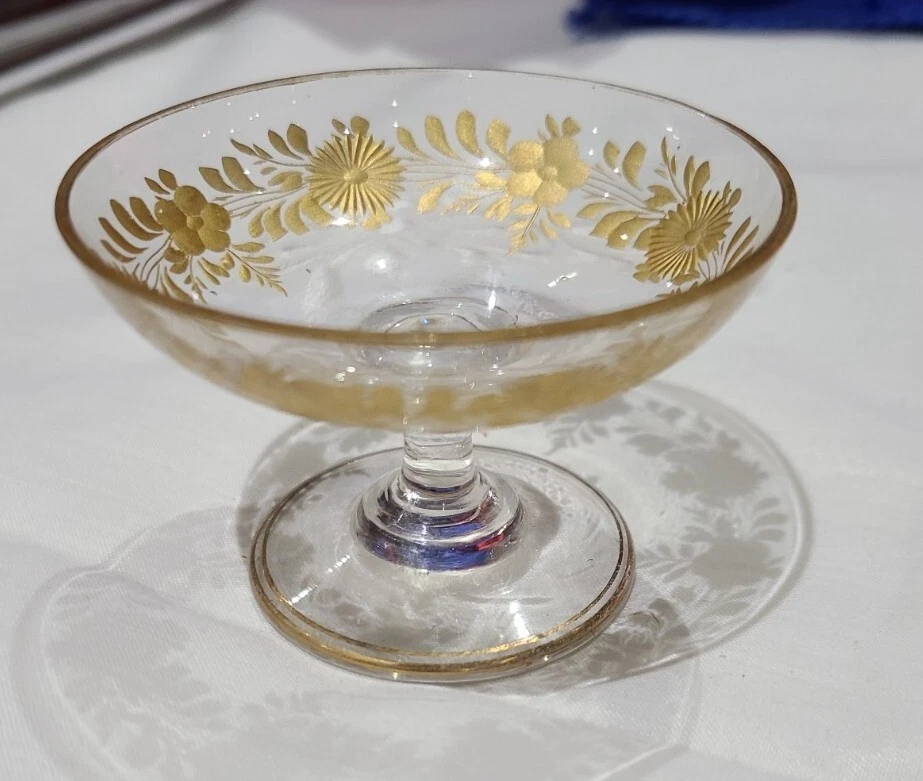
Moser Glass, a luxury glassware brand founded in 1857, created the Gilt pattern with intricate gold leaf details that reflect the richness of the Victorian era. The Gilt pattern features lavishly gilded edges and ornamental accents, often combined with vibrant colors like ruby red or cobalt blue. The rarity of Moser’s Gilt pieces is tied to their expensive production process and their limited availability. Moser Glass Gilt pieces are highly valued, with prices typically ranging from $300 to $8,000 depending on size and detail.
Moser’s Gilt glassware is recognized for its exceptional quality and artistic design, making it a prized possession among collectors of fine glassware. Each piece is carefully hand-painted and gilded, resulting in unique and exquisite items. The timeless elegance of the Gilt pattern, coupled with Moser’s historical significance in the world of fine glass, makes it one of the most coveted patterns. Collectors value these pieces for their rarity and the intricate artistry involved in their creation.
Baccarat Crystal Clear Cut Pattern

Baccarat Crystal’s Clear Cut pattern is known for its elegant, timeless design, which features sharp cuts and clean lines that give the glass a brilliant sparkle. First produced in the 19th century, Baccarat is a French luxury brand renowned for its high-quality crystal craftsmanship. The rarity of the Clear Cut pattern is due to Baccarat’s careful selection of materials and limited production. Depending on the piece, prices for Baccarat Clear Cut items can range from $200 to $10,000 or more, with large, intricate pieces fetching the highest prices.
Baccarat Crystal is widely recognized for its clarity and brilliance, and the Clear Cut pattern exemplifies the company’s commitment to exceptional craftsmanship. Each piece is meticulously hand-cut to create the distinctive sparkle and shine that Baccarat is famous for. The clarity and precision of the cuts make this pattern a standout in any collection. Due to its heritage and fine artistry, Baccarat Clear Cut continues to be a highly sought-after pattern in the world of antique glassware.
Bohemian Glass Cut-to-Clear Pattern
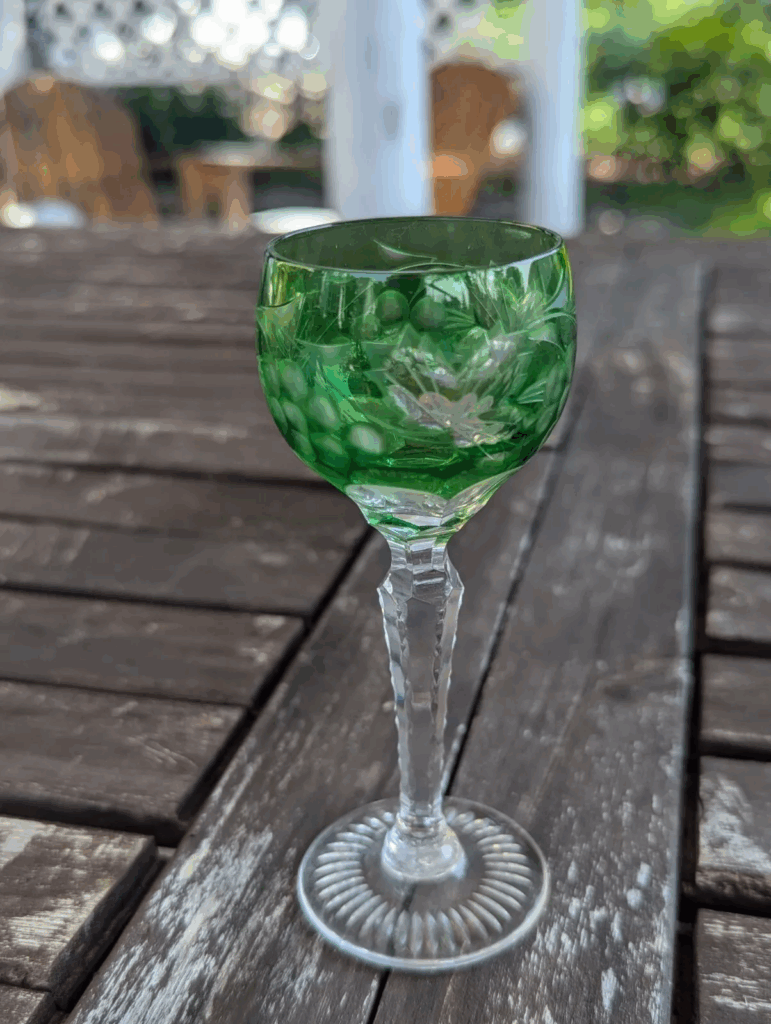
Bohemian glass, originating from the Czech Republic, is famous for its intricate cut-to-clear designs. This pattern involves cutting the glass to reveal vivid colors beneath the surface, often with floral or geometric motifs. The rarity of Bohemian glass lies in the skill required to create these intricate cuts, which were often produced by hand. Prices for Bohemian glass with cut-to-clear patterns typically range from $200 to $5,000, depending on the complexity and color of the design.
The cut-to-clear method used in Bohemian glass creates stunning visual effects that make each piece unique. These glass pieces often feature a rich array of colors, with ruby red, emerald green, and cobalt blue being some of the most prized hues. Due to the high level of craftsmanship and the time-consuming process involved, Bohemian glass is highly valued among collectors. Its beautiful designs and rich history make it a valuable addition to any collection of antique glassware.
Waterford Crystal Lismore Pattern
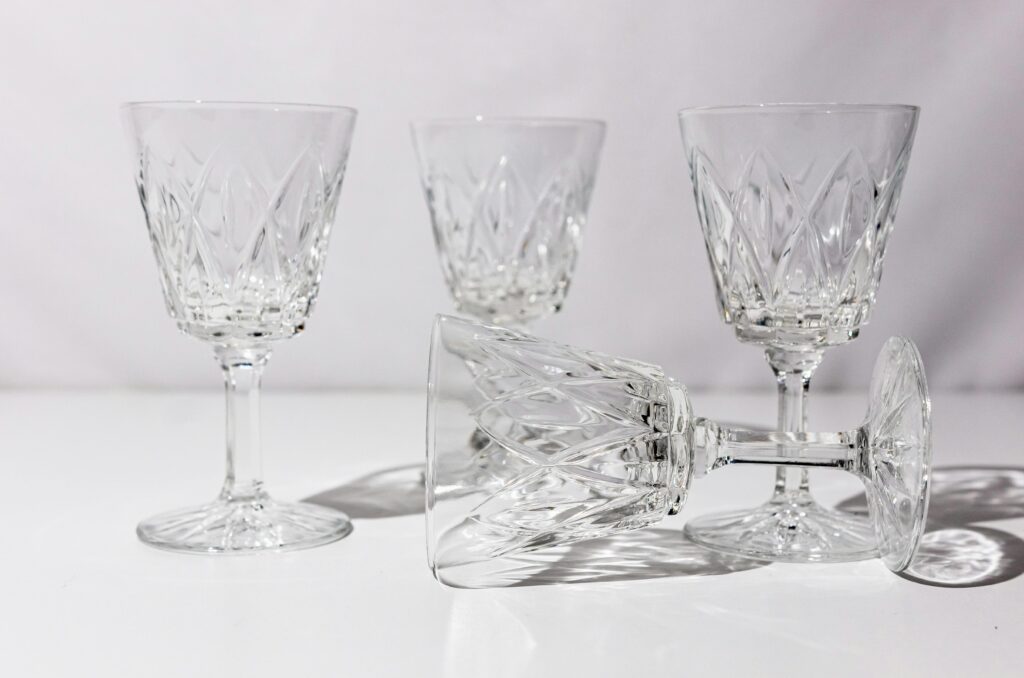
Waterford Crystal’s Lismore pattern, first introduced in 1952, is one of the most iconic crystal patterns ever created. The design features a combination of cut glass and intricate geometric shapes, which give the pieces a beautiful sparkle and clarity. Lismore glassware remains rare due to Waterford’s high-quality standards and the intricate work involved in producing each piece. Depending on the size and piece, Waterford Crystal Lismore items can range from $100 to $5,000 or more.
The Lismore pattern is known for its stunning visual appeal, with delicate cuts that create a radiant effect when light passes through the crystal. The design is often used in both decorative and functional pieces, such as vases, goblets, and decanters. Due to its combination of elegance and practicality, Lismore continues to be highly regarded by collectors of fine crystal. This pattern represents the excellence of Waterford craftsmanship and remains a symbol of luxury in the world of antique glassware.
These unique patterns not only add beauty to your collection but can also increase its value over time. Whether you are a seasoned collector or just starting out, investing in these pieces offers a way to preserve art and culture. Exploring these rare patterns can lead to both valuable discoveries and timeless elegance in your home.
This article originally appeared on Avocadu.
